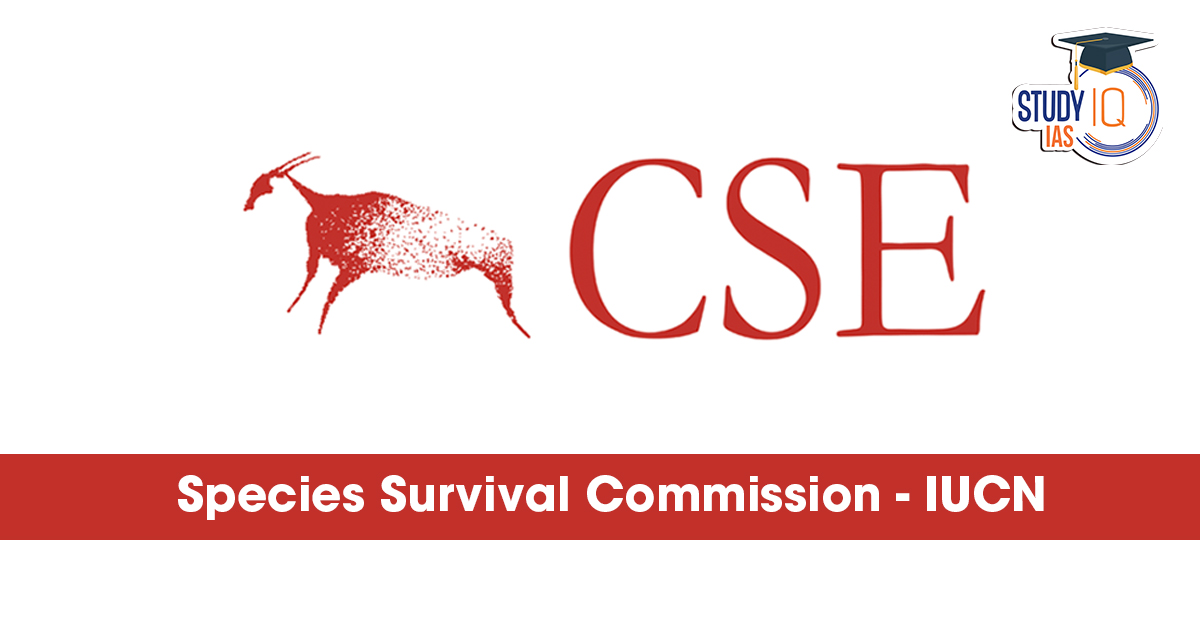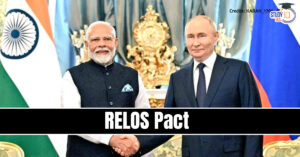Table of Contents
The Species Survival Commission (SSC) is one of the six expert commissions under the International Union for Conservation of Nature (IUCN). It serves as a global network of more than 9,000 scientists, wildlife experts, and conservationists who provide technical and scientific advice on species conservation.
The SSC plays a pivotal role in preparing and maintaining the IUCN Red List of Threatened Species, which is the world’s most comprehensive database on the global conservation status of plant and animal species.
In 2025, Vivek Menon, founder of the Wildlife Trust of India (WTI), was elected as the Chair of the IUCN Species Survival Commission, marking a proud moment for India’s conservation community.
About the IUCN (International Union for Conservation of Nature)
The IUCN, established in 1948, is the world’s largest and oldest environmental network, uniting governments, NGOs, scientists, and indigenous communities to promote biodiversity conservation and sustainable resource use.
Key Facts about IUCN
| Parameter | Details |
|---|---|
| Full Name | International Union for Conservation of Nature |
| Founded | 1948 |
| Headquarters | Gland, Switzerland |
| Membership | Over 1,400 members (including governments and NGOs) |
| Objective | To conserve nature, ensure sustainable use of resources, and influence environmental policies globally. |
| Famous For | IUCN Red List of Threatened Species |
About the IUCN Species Survival Commission (SSC)
The Species Survival Commission (SSC) is one of the six expert commissions that support the IUCN’s mission. It acts as a voluntary network of experts from around the world — including biologists, ecologists, veterinarians, and policy specialists — who contribute to species conservation science, research, and policy guidance.
Key Highlights:
| Aspect | Details |
|---|---|
| Parent Body | International Union for Conservation of Nature (IUCN) |
| Type | Expert advisory body |
| Membership | Over 9,000 volunteer members globally |
| Chair (2025) | Vivek Menon (Founder, Wildlife Trust of India) |
| Purpose | To provide scientific input and strategic direction for species conservation worldwide. |
Structure of the SSC
The SSC operates through a network of specialist groups, task forces, and subcommittees, each focusing on specific species groups or conservation themes.
1. Specialist Groups
-
These groups are dedicated to studying and protecting specific taxa (species groups) or ecosystems.
-
Examples:
-
Cat Specialist Group (big cats like tigers and leopards)
-
Elephant Specialist Group
-
Primate Specialist Group
-
Plant Conservation Group
-
2. Task Forces
-
Formed to address emerging or cross-cutting conservation challenges such as climate change, wildlife trade, and habitat restoration.
3. Subcommittees
-
Focused on governance, ethics, and scientific integrity to ensure transparency and accountability within the SSC.
This decentralized yet collaborative model ensures that expert knowledge is applied effectively at both global and regional levels.
Functions of the IUCN Species Survival Commission
The SSC’s work is diverse and fundamental to biodiversity protection. Below are its major roles and responsibilities:
1. Preparing and Updating the IUCN Red List
The IUCN Red List of Threatened Species is the world’s leading inventory of the global conservation status of plant and animal species.
The SSC:
-
Collects and evaluates data on population trends, habitat loss, and threats.
-
Categorizes species as Critically Endangered (CR), Endangered (EN), Vulnerable (VU), etc.
-
Provides data that guide conservation priorities, funding, and policy formulation.
2. Advising on Biodiversity and Conservation Policy
The SSC provides scientific advice to:
-
National governments
-
UN bodies like UNEP and CBD
-
International treaties such as CITES (Convention on International Trade in Endangered Species)
3. Coordinating Specialist Groups
The SSC oversees more than 160 specialist groups that work on species recovery, threat analysis, and habitat conservation.
4. Promoting Scientific Research
It encourages data-driven research on species distribution, population dynamics, and ecological interactions to inform policy and conservation actions.
5. Capacity Building and Collaboration
The SSC trains young conservationists, builds global partnerships, and supports the development of regional Red Lists and conservation strategies.
Importance of the SSC in Global Conservation
The SSC serves as the scientific backbone of global biodiversity conservation.
Its Importance Lies In:
-
Providing reliable data for global conservation planning.
-
Guiding the IUCN Red List, which influences funding and policy.
-
Supporting recovery plans for endangered and critically endangered species.
-
Integrating climate science into species conservation planning.
-
Fostering collaboration between scientists, NGOs, and governments worldwide.
Without the SSC, conservation efforts would lack coordination, prioritization, and scientific credibility.
India’s Connection with the SSC
India plays a crucial role in global biodiversity conservation, and its experts have long contributed to IUCN and SSC activities.
1. Leadership Recognition
-
In 2025, Vivek Menon, the Founder and Executive Director of Wildlife Trust of India (WTI), was elected as the Chair of the SSC.
-
His election marks a major milestone for India, showcasing its growing influence in international wildlife policy and conservation science.
2. National Red List Assessment (NRLA)
-
India has launched the National Red List Assessment (NRLA) project (2025–2030) to evaluate the extinction risk of 11,000 species — including 7,000 flora and 4,000 fauna — aligning with IUCN standards.
3. Indian Contributions
-
Indian specialists actively contribute to SSC working groups on tigers, elephants, mangroves, and freshwater ecosystems.
-
The Wildlife Institute of India (WII) and WTI collaborate with IUCN in data collection and training initiatives.
IUCN’s Six Commissions
The SSC is one among six commissions that provide scientific and policy expertise to IUCN.
| Commission | Focus Area |
|---|---|
| 1. Species Survival Commission (SSC) | Species conservation and Red List assessments |
| 2. World Commission on Protected Areas (WCPA) | Protected area management and planning |
| 3. Commission on Ecosystem Management (CEM) | Ecosystem restoration and resilience |
| 4. Commission on Environmental Law (CEL) | Environmental governance and legal frameworks |
| 5. Commission on Education and Communication (CEC) | Environmental education and awareness |
| 6. Commission on Environmental, Economic and Social Policy (CEESP) | Integrating sustainability and livelihoods in policy |
These commissions together guide IUCN’s global conservation strategy.
IUCN Red List Categories (For Reference)
| Category | Meaning |
|---|---|
| EX | Extinct |
| EW | Extinct in the Wild |
| CR | Critically Endangered |
| EN | Endangered |
| VU | Vulnerable |
| NT | Near Threatened |
| LC | Least Concern |
| DD | Data Deficient |
| NE | Not Evaluated |
The SSC ensures the accuracy of these assessments, which serve as benchmarks for international conservation action.
Challenges and the Way Forward
Major Challenges:
-
Habitat loss due to deforestation and urbanization
-
Illegal wildlife trade and poaching
-
Climate change impacting species distribution
-
Insufficient funding for field research
-
Political and economic instability in biodiversity hotspots
The Way Forward:
-
Strengthen data collection through regional collaborations.
-
Enhance funding for local conservation programs.
-
Integrate AI and remote sensing in species monitoring.
-
Promote inclusive conservation involving local and indigenous communities.
Conclusion
The Species Survival Commission (SSC) of the IUCN remains at the forefront of the global effort to protect and restore the planet’s biodiversity. By combining scientific rigor with policy influence, it serves as the bridge between research and real-world conservation action.
With leaders like Vivek Menon and a network of thousands of dedicated experts, the SSC continues to guide the world toward achieving sustainable, science-based, and equitable conservation goals.


 Rethinking Urban Governance in India
Rethinking Urban Governance in India
 RELOS Pact Signed: India-Russia Logistic...
RELOS Pact Signed: India-Russia Logistic...
 Central Excise (Amendment) Bill 2025: Ci...
Central Excise (Amendment) Bill 2025: Ci...

























